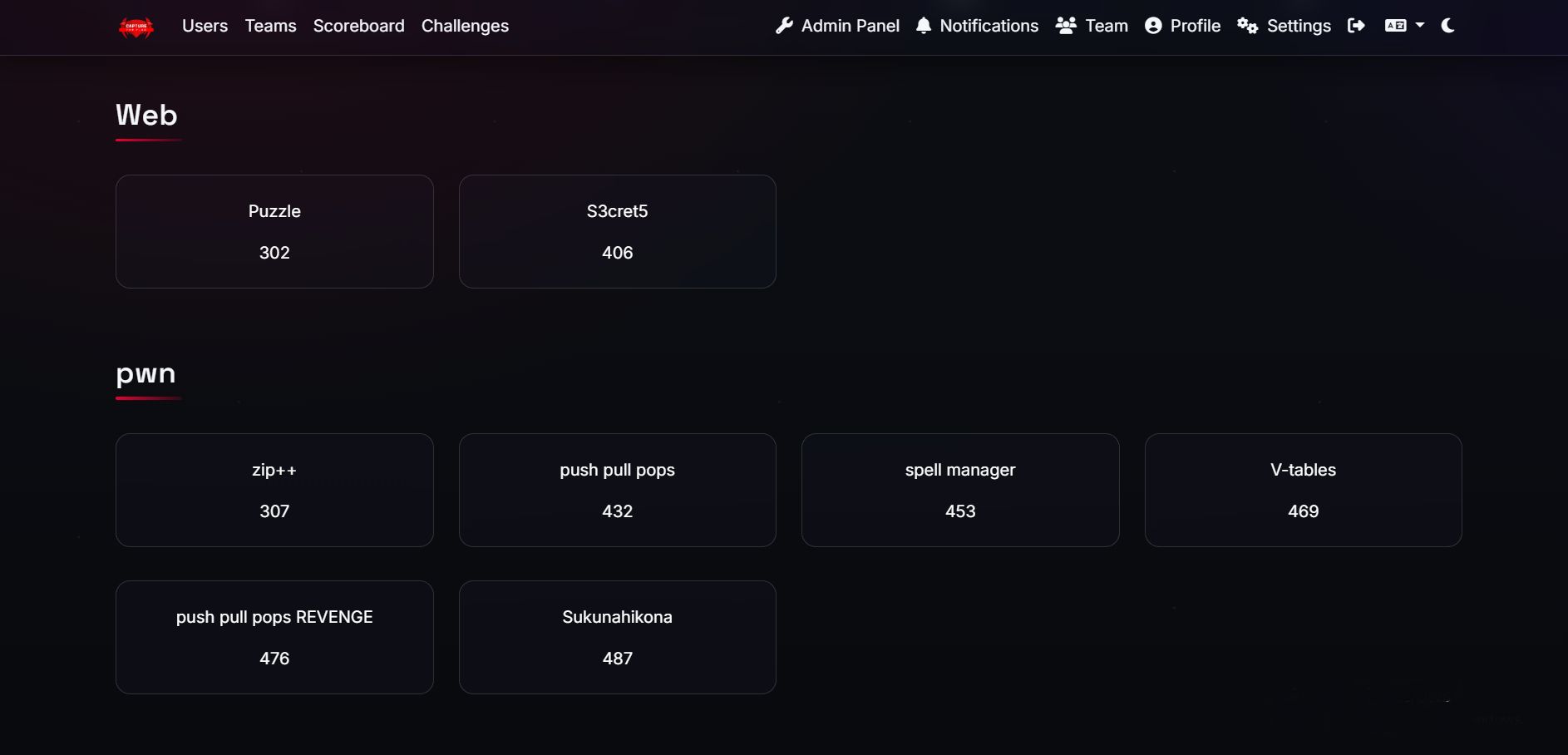Securinets Quals CTF: Cloud Infrastructure
As part of a team, I co-designed and deployed the full cloud infrastructure for the “Securinets Quals” international CTF. This project was a significant technical challenge focused on building a high-availability, scalable, and fault-tolerant system to handle heavy, unpredictable traffic from over 1,200 teams.
Infrastructure Overview
The architecture was split into two main components: the core CTF platform and the challenge hosting environment, both designed for resilience.
1. Core Platform (CTFd)
This was the main web application where players registered and submitted flags.
- Application: We used CTFd as the platform, deployed on 3 Virtual Machines.
- Load Balancing: An HAProxy load balancer was placed in front of the CTFd replicas to distribute traffic and ensure 100% uptime.
- Database: We utilized Google Cloud SQL (a managed MySQL service) for the primary database, handling all team and submission data.
- Caching: A GCP-managed Redis instance was used for caching to ensure sub-second response times, even under peak load.
- File Storage: All challenge attachments and static files were hosted on Google Cloud Storage (GCS) to reduce load on the application servers.
2. Challenge Hosting
To ensure stability, each challenge was hosted in its own isolated environment.
- Redundancy: Each challenge was containerized using Docker and deployed with 2 replicas on separate VMs.
- Traffic Management: A dedicated HAProxy instance was used to load balance player traffic between the replicas for each challenge. This prevented a single challenge from impacting the rest of the competition.
- Automation: Bash scripts were used for the automated deployment and configuration of the challenge containers and services.



